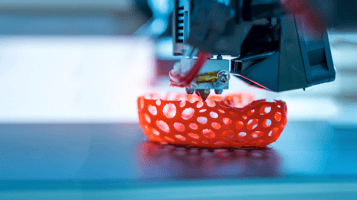Imagine an end to human organ transplant waitlists and a world where the testing of chemical and...
Our laundry is polluting the oceans
There is increasing attention in the media and the general public on the environmental impact of plastics, including the growing problem of pollution from microplastics. These tiny pieces of plastic have been detected on all seven continents - in our air, water, food, and even our body tissues. However, did you know that the single biggest contributor to this problem might be the fabric in your washing machine?
The UN Environmental Programme (UNEP) estimates that as much as 35% of all ocean-based microplastics come from apparel made with synthetic fabrics, which are broken down into tiny particles in our home washing machines and flushed into the waterways. Just one wash cycle can release thousands of microplastic particles into the watershed, and – counterintuitively – delicate cycles can make things even worse. Who had any idea that buying and washing a shirt or fleece jacket could be contributing so much harm to the environment?
Of course, producing apparel with more natural fibers would help, and many popular clothing brands are committed to doing so. But given the well-established performance advantages of synthetic textiles, their popularity is unlikely to see a dramatic shift in the near future. In addition, municipal water treatment technologies are still largely inadequate for removing significant microplastic content from waste streams. New large-scale water treatment technologies are being considered, but may not see near-term adoption.
Despite those challenges, a simple improvement to washing machines could make a real difference. Several companies have launched innovative new washing machine-focused solutions to combat this problem, with many claiming to reduce microfiber pollution by 90+%. Solutions range from aftermarket washing machine filters like those from www.PlanetCare.org, Cora Ball, etc. or even new washing machine models from Electrolux and others featuring integrated microplastic filters.
Several great solutions are becoming more available and affordable and we should work to support this type of innovation. However, this problem is not yet solved. We are only beginning to understand the extent of this issue, including its impact on aquatic life, as well as potential bioaccumulation and adverse health effects in humans. Additional related problems are also only beginning to be understood, such as microplastic air emissions from fabric manufacturing processes and even residential clothing dryers. Without building greater awareness into the importance and causes of this issue, and potentially seeking regulatory action or the creation of new industry certifications similar to the Energy Star program, we are unlikely to see large-scale market change.

This particular issue has been discussed in several online publications; however, it came to our attention as a recently trending problem in Aperture’s opportunity discovery platform (profiled below). It is a great example of a key problem that is important, timely, and ultimately solvable. We admit that we don't have the ideal solution, but we're hoping that innovators with the right blend of technology, incentives, and awareness can help make a difference.
We believe that every problem is an opportunity for innovation. What can you and your company do to help address this issue?
This "featured problem" article is the first in a series that we're hoping can help raise awareness into important problems and needs in the world, while highlighting the capabilities of the Aperture.ai discovery platform, which can give you an ongoing ability to identify important problems that your company can solve in virtually any space. Stay tuned for more to come!
-2-1.png?width=303&height=100&name=Aperture_Logo_Black(large)-2-1.png)



